Yulia V. Malova Psychological Faculty of Lomonosov Moscow
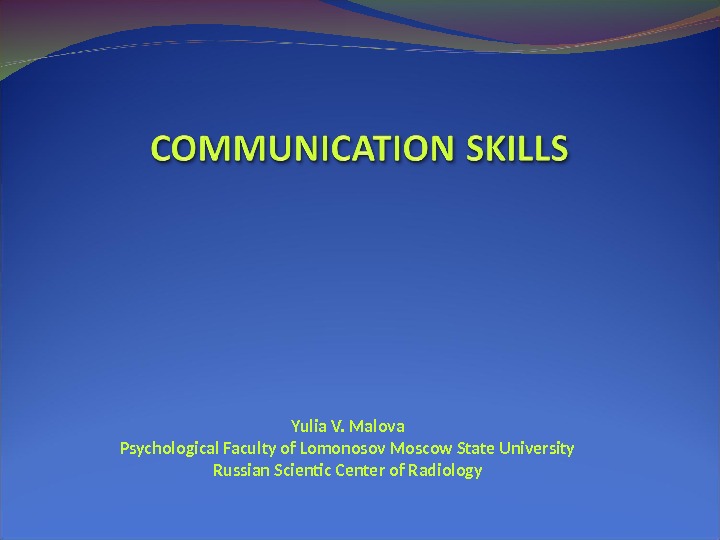
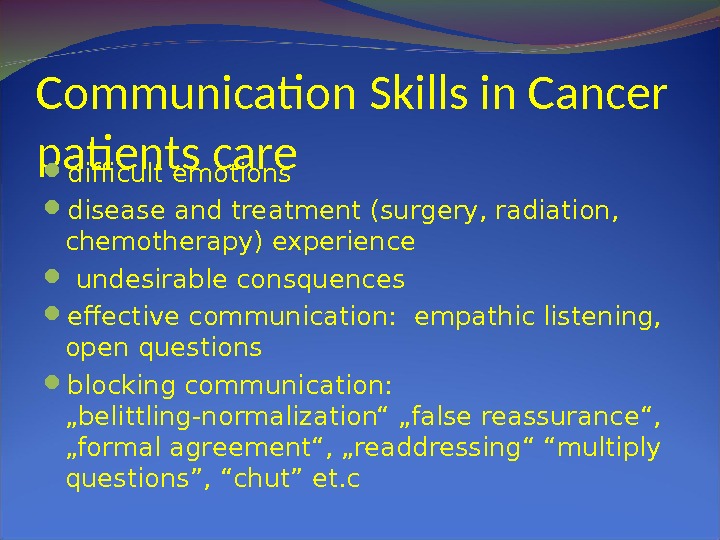
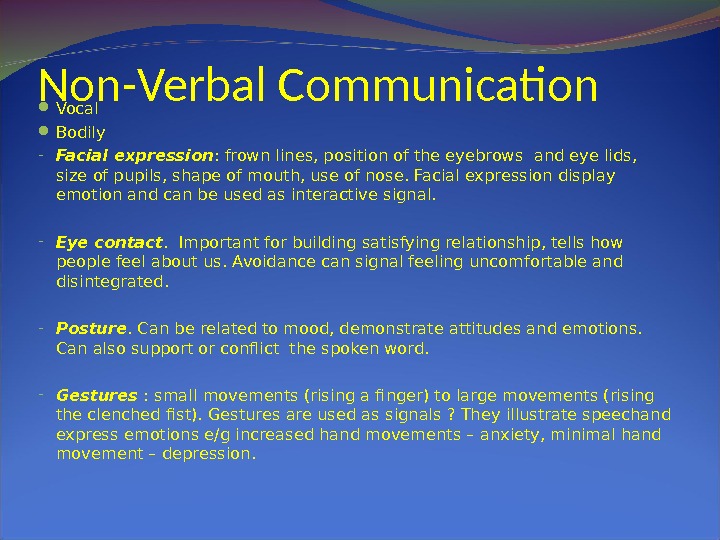
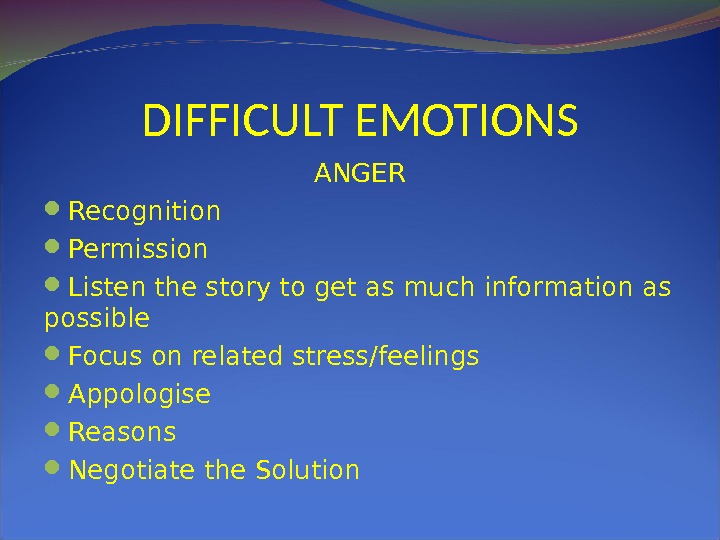
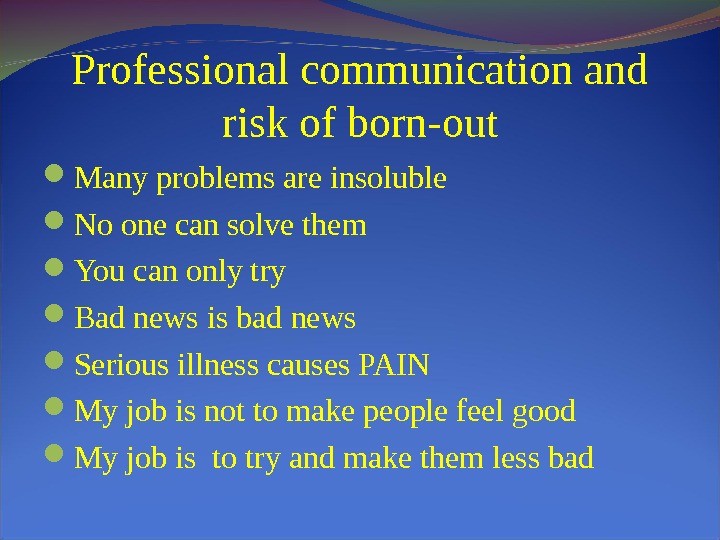
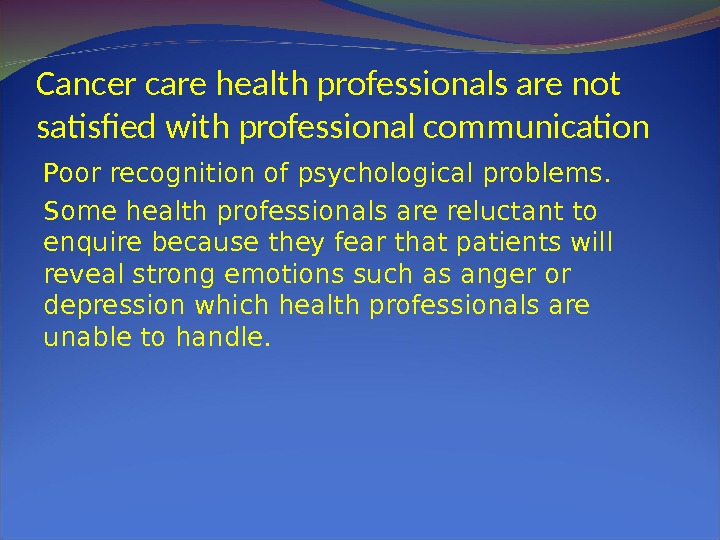
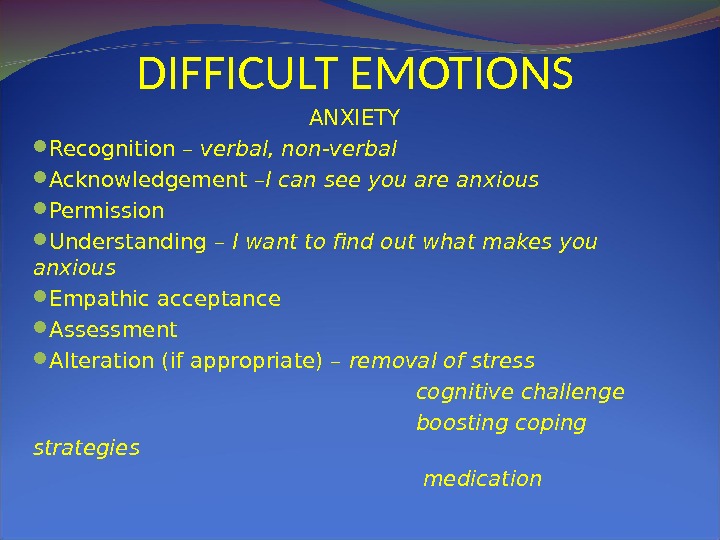
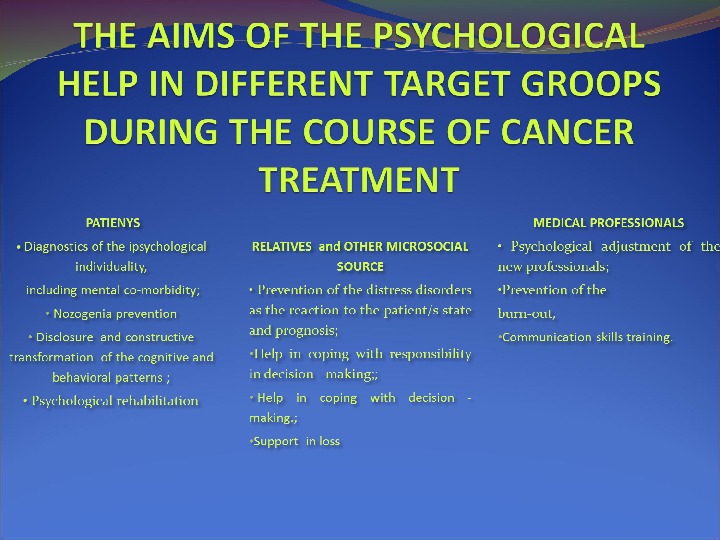
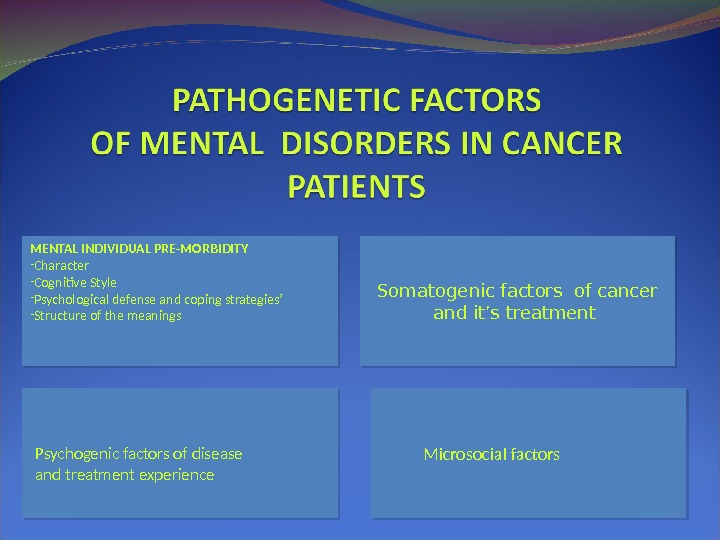

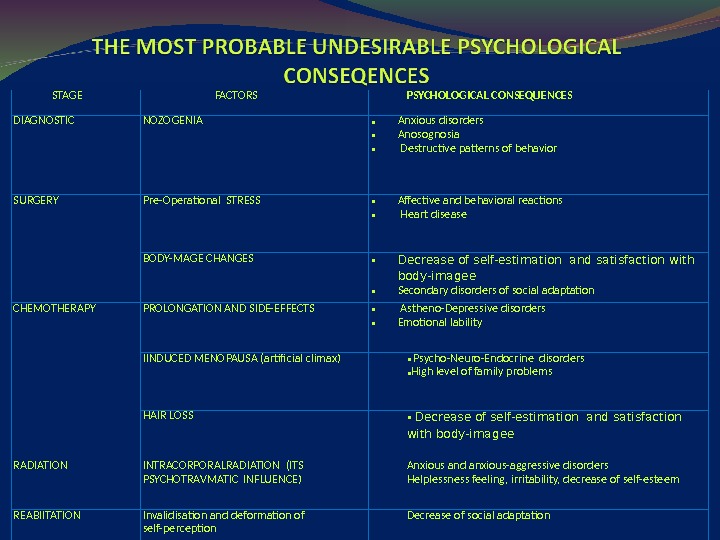
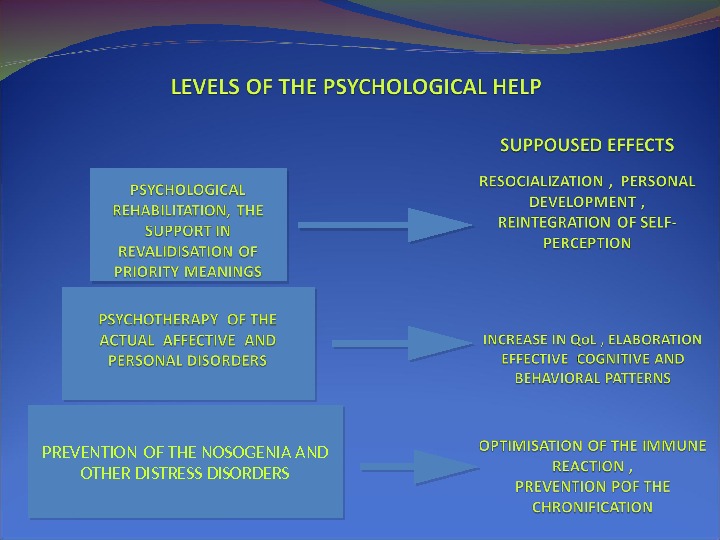
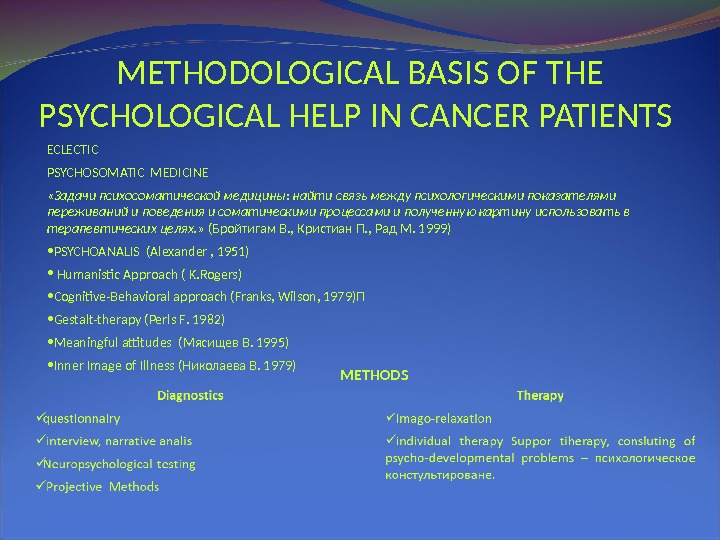
- Размер: 1.7 Mегабайта
- Количество слайдов: 13
Описание презентации Yulia V. Malova Psychological Faculty of Lomonosov Moscow по слайдам
 Yulia V. Malova Psychological Faculty of Lomonosov Moscow State University Russian Scientic Center of Radiology
Yulia V. Malova Psychological Faculty of Lomonosov Moscow State University Russian Scientic Center of Radiology
 Communication Skills in Cancer patients care difficult emotions disease and treatment (surgery, radiation, chemotherapy) experience undesirable consquences effective communication: empathic listening, open questions blocking communication: „belittling-normalization“ „false reassurance“, „formal agreement“, „readdressing“ “multiply questions”, “chut” et. c
Communication Skills in Cancer patients care difficult emotions disease and treatment (surgery, radiation, chemotherapy) experience undesirable consquences effective communication: empathic listening, open questions blocking communication: „belittling-normalization“ „false reassurance“, „formal agreement“, „readdressing“ “multiply questions”, “chut” et. c
 Non-Verbal Communication Vocal Bodily — Facial expression : frown lines, position of the eyebrows and eye lids, size of pupils, shape of mouth, use of nose. Facial expression display emotion and can be used as interactive signal. — Eye contact. Important for building satisfying relationship, tells how people feel about us. Avoidance can signal feeling uncomfortable and disintegrated. — Posture. Can be related to mood, demonstrate attitudes and emotions. Can also support or conflict the spoken word. — Gestures : small movements (rising a finger) to large movements (rising the clenched fist). Gestures are used as signals ? They illustrate speechand express emotions e/g increased hand movements – anxiety, minimal hand movement – depression.
Non-Verbal Communication Vocal Bodily — Facial expression : frown lines, position of the eyebrows and eye lids, size of pupils, shape of mouth, use of nose. Facial expression display emotion and can be used as interactive signal. — Eye contact. Important for building satisfying relationship, tells how people feel about us. Avoidance can signal feeling uncomfortable and disintegrated. — Posture. Can be related to mood, demonstrate attitudes and emotions. Can also support or conflict the spoken word. — Gestures : small movements (rising a finger) to large movements (rising the clenched fist). Gestures are used as signals ? They illustrate speechand express emotions e/g increased hand movements – anxiety, minimal hand movement – depression.
 DIFFICULT EMOTIONS ANGER Recognition Permission Listen the story to get as much information as possible Focus on related stress/feelings Appologise Reasons Negotiate the Solution
DIFFICULT EMOTIONS ANGER Recognition Permission Listen the story to get as much information as possible Focus on related stress/feelings Appologise Reasons Negotiate the Solution
 Professional communication and risk of born-out Many problems are insoluble No one can solve them You can only try Bad news is bad news Serious illness causes PAIN My job is not to make people feel good My job is to try and make them less bad
Professional communication and risk of born-out Many problems are insoluble No one can solve them You can only try Bad news is bad news Serious illness causes PAIN My job is not to make people feel good My job is to try and make them less bad
 Cancer care health professionals are not satisfied with professional communication Poor recognition of psychological problems. Some health professionals are reluctant to enquire because they fear that patients will reveal strong emotions such as anger or depression which health professionals are unable to handle.
Cancer care health professionals are not satisfied with professional communication Poor recognition of psychological problems. Some health professionals are reluctant to enquire because they fear that patients will reveal strong emotions such as anger or depression which health professionals are unable to handle.
 DIFFICULT EMOTIONS ANXIETY Recognition – verbal, non-verbal Acknowledgement –I can see you are anxious Permission Understanding – I want to find out what makes you anxious Empathic acceptance Assessment Alteration (if appropriate) – removal of stress cognitive challenge boosting coping strategies medication
DIFFICULT EMOTIONS ANXIETY Recognition – verbal, non-verbal Acknowledgement –I can see you are anxious Permission Understanding – I want to find out what makes you anxious Empathic acceptance Assessment Alteration (if appropriate) – removal of stress cognitive challenge boosting coping strategies medication

 Somatogenic factors of cancer and it’s treatment MENTAL INDIVIDUAL PRE-MORBIDITY — Character — Cognitive Style — Psychological defense and coping strategies’ — Structure of the meanings Psychogenic factors of disease and treatment experience Microsocial factors
Somatogenic factors of cancer and it’s treatment MENTAL INDIVIDUAL PRE-MORBIDITY — Character — Cognitive Style — Psychological defense and coping strategies’ — Structure of the meanings Psychogenic factors of disease and treatment experience Microsocial factors

 STAGE FACTORS PSYCHOLOGICAL CONSEQUENCES DIAGNOSTIC NOZOGENIA • Anxious disorders • Anosognosia • Destructive patterns of behavior SURGERY Pre-Operational STRESS • Affective and behavioral reactions • Heart disease BODY-MAGE CHANGES • Decrease of self-estimation and satisfaction with body-image е • Secondary disorders of social adaptation CHEMOTHERAPY PROLONGATION AND SIDE-EFFECTS • Astheno-Depressive disorders • Emotional lability IINDUCED MENOPAUSA (artificial climax) • Psycho-Neuro-Endocrine disorders • High level of family problems HAIR LOSS • Decrease of self-estimation and satisfaction with body-image е RADIATION INTRACORPORALRADIATION (ITS PSYCHOTRAVMATIC INFLUENCE) Anxious and anxious-aggressive disorders Helplessness feeling, irritability, decrease of self-esteem RE ABIITATION Invalidisation and deformation of self-perception Decrease of social adaptation П PALLIATIVE CARE Hopeless Passive capitulation
STAGE FACTORS PSYCHOLOGICAL CONSEQUENCES DIAGNOSTIC NOZOGENIA • Anxious disorders • Anosognosia • Destructive patterns of behavior SURGERY Pre-Operational STRESS • Affective and behavioral reactions • Heart disease BODY-MAGE CHANGES • Decrease of self-estimation and satisfaction with body-image е • Secondary disorders of social adaptation CHEMOTHERAPY PROLONGATION AND SIDE-EFFECTS • Astheno-Depressive disorders • Emotional lability IINDUCED MENOPAUSA (artificial climax) • Psycho-Neuro-Endocrine disorders • High level of family problems HAIR LOSS • Decrease of self-estimation and satisfaction with body-image е RADIATION INTRACORPORALRADIATION (ITS PSYCHOTRAVMATIC INFLUENCE) Anxious and anxious-aggressive disorders Helplessness feeling, irritability, decrease of self-esteem RE ABIITATION Invalidisation and deformation of self-perception Decrease of social adaptation П PALLIATIVE CARE Hopeless Passive capitulation
 PREVENTION OF THE NOSOGENIA AND OTHER DISTRESS DISORDERS
PREVENTION OF THE NOSOGENIA AND OTHER DISTRESS DISORDERS
 METHODOLOGICAL BASIS OF THE PSYCHOLOGICAL HELP IN CANCER PATIENTS ECLECTIC PSYCHOSOMATIC MEDICINE «Задачи психосоматической медицины: найти связь между психологическими показателями переживаний и поведения и соматическими процессами и полученную картину использовать в терапевтических целях. » (Бройтигам В. , Кристиан П. , Рад М. 1999) • PSYCHOANALIS (Alexander , 1951) • Humanistic Approach ( K. Rogers) • Cognitive-Behavioral approach (Franks, Wilson, 1979) П • Gestalt-therapy (Perls F. 1982) • Meaningful attitudes (Мясищев В. 1995) • Inner Image of Illness (Николаева В. 1979) METHODS
METHODOLOGICAL BASIS OF THE PSYCHOLOGICAL HELP IN CANCER PATIENTS ECLECTIC PSYCHOSOMATIC MEDICINE «Задачи психосоматической медицины: найти связь между психологическими показателями переживаний и поведения и соматическими процессами и полученную картину использовать в терапевтических целях. » (Бройтигам В. , Кристиан П. , Рад М. 1999) • PSYCHOANALIS (Alexander , 1951) • Humanistic Approach ( K. Rogers) • Cognitive-Behavioral approach (Franks, Wilson, 1979) П • Gestalt-therapy (Perls F. 1982) • Meaningful attitudes (Мясищев В. 1995) • Inner Image of Illness (Николаева В. 1979) METHODS
